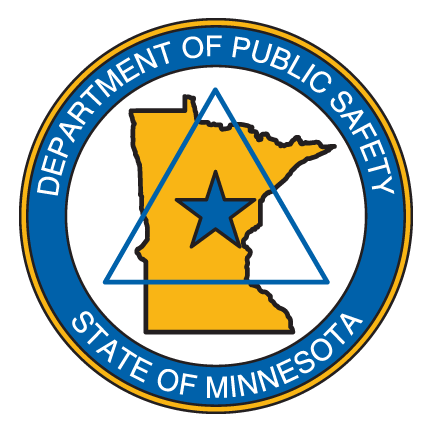
Alcohol and Gambling Enforcement
Bureau of Criminal Apprehension
Driver and Vehicle Services
Emergency Communication Networks
Homeland Security and Emergency Management
Minnesota State Patrol
Office of Communications
Office of Justice Programs
Office of Pipeline Safety
Office of Traffic Safety
State Fire Marshal
|
NEWS RELEASE
CONTACT:
Hennepin and Ramsey Counties Added to Federal Disaster Declaration
Dakota County Continues to Assess Damages
Page Content ST. PAUL – Governor Mark Dayton has secured the addition of two counties to the presidential disaster declaration originally received July 21. The addition of Hennepin and Ramsey counties means 37 counties and three tribal governments will receive federal and state assistance to recover from damages to public infrastructure caused by severe storms, mudslides and flooding June 11-July 11. Dakota County is still assessing its damages. Approximately $30 million in eligible expenses have been identified in counties applying for public assistance. Disaster TimelineJune 11 - July 11 - Severe Storms, mudslides and flooding occur across Minnesota. - July 9 - Governor Mark Dayton requests a presidential disaster declaration for the eight counties that received the earliest damage: Chippewa, Freeborn, Jackson, Murray, Nobles, Pipestone, Renville and Rock counties
- July 21 - Presidential disaster declaration is received for eight counties: Chippewa, Freeborn, Jackson, Murray, Nobles, Pipestone, Renville, and Rock
- July 29 HSEM Director Eide sends a letter to FEMA requesting 30 additional counties and two tribal governments be added to the declaration: Beltrami, Blue Earth, Brown, Carver, Dakota, Dodge, Faribault, Hennepin, Koochiching, Lac Qui Parle, Lake of the Woods, Le Sueur, Lyon, Marshall, Martin, McLeod, Nicollet, Ramsey, Redwood, Rice, Roseau, Scott, Sibley, Steele, Todd, Wadena, Waseca, Watonwan, Wright and Yellow Medicine counties and the tribal governments of the Red Lake Band of Chippewa and Prairie Island Indian Community.
- July 31 - FEMA adds 24 counties and two tribal governments to the disaster declaration. Damage assessment discussions continue for remaining six counties and one additional tribal government: Beltrami, Blue Earth, Brown, Carver, Dodge, Faribault, Koochiching, Lac Qui Parle, Lake of the Woods, Le Sueur, , Marshall, Martin, McLeod, Nicollet, , Redwood, Rice, Roseau, Scott, Sibley, Steele, Todd, Wadena, Waseca, and Yellow Medicine counties and the tribal governments of the Red Lake Band of Chippewa and Prairie Island Indian Community.
- August 8 - Governor Mark Dayton sends a letter to President Barack Obama asking that the remaining six counties and one tribal government be added to the declaration: Lyon, Watonwan, Wright, Dakota, Ramsey and Hennepin counties.
- August 13 - FEMA adds Lyon, Watonwan and Wright counties and the Bois Forte Band of Chippewa tribal government to the disaster declaration. Damage assessment discussions continue for the remaining three counties.
- August 21 – FEMA adds Hennepin and Ramsey counties to the disaster declaration.
Public Assistance Program
Counties and tribal governments included in the disaster declaration are eligible for two categories of federal and state aid through the Public Assistance Program:
- Public Assistance: Assistance to state and local government and certain private not for profit organizations for emergency work and the repair or replacement of disaster-damaged facilities. This applies within the counties in the disaster area.
- Hazard Mitigation Grant Program: Assistance to state and local government and certain private not for profit organizations for actions taken to prevent or reduce long-term risk to life and property from natural hazards. All counties in the state of Minnesota are eligible to apply for assistance under this program.
Under a presidential disaster declaration, FEMA will fund 75 percent of approved costs. The state of Minnesota will fund the non-federal share. Eligible work can include debris removal, emergency services related to the disaster and repair or replacement of damaged public facilities such as roads, bridges, buildings, utilities and recreation areas.
Next Steps for Flood-Damaged Communities
Counties included in the federal disaster declaration will engage in the following process with state and federal emergency management officials.
- Applicant Briefing – The Department of Public Safety will hold informational meetings for local officials in affected communities. These meetings will explain the process of receiving federal aid and provide preliminary paperwork for applicants to complete. All requests for public assistance must be filed with the state within 30 days after the area is designated eligible for assistance.
- Kickoff Meeting – FEMA will return to the affected communities to meet with each aid applicant to develop an action plan for disaster recovery.
- Recovery Project Planning – FEMA and the Minnesota Department of Public Safety will develop a project worksheet for each project that clearly defines the work to be done and the projected costs.
###
445 Minnesota Street, Suite 100 | Saint Paul, Minnesota 55101-5155 | dps.mn.gov
|

